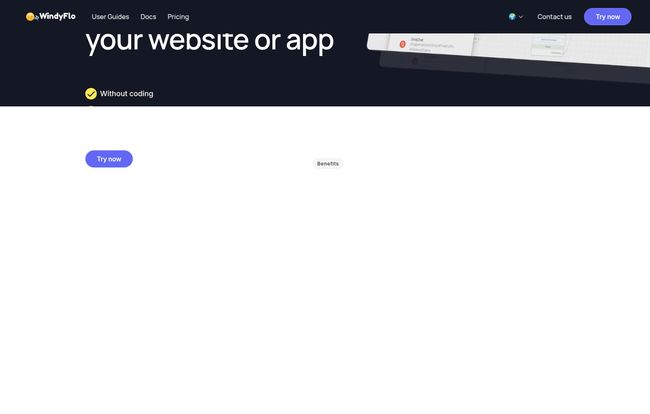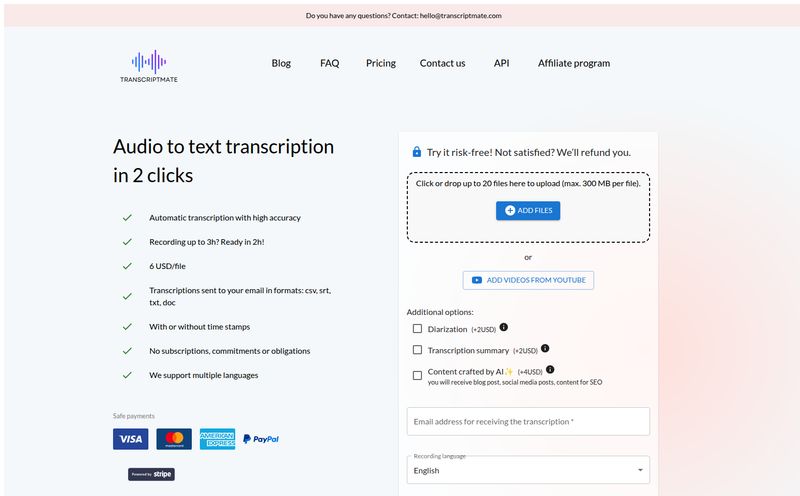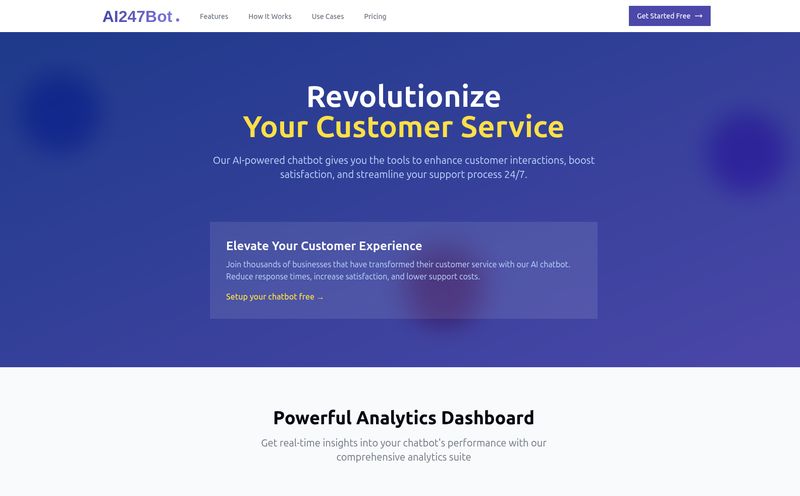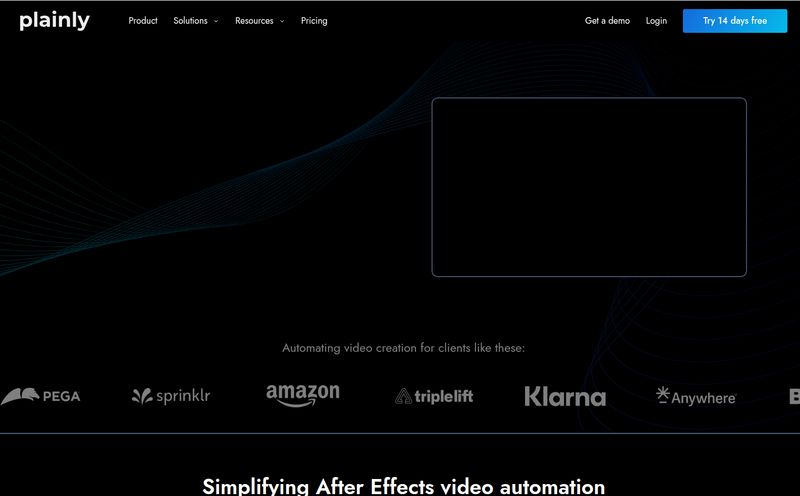I’ve been in the SEO and traffic game for a long time. Long enough to remember when 'AI' was just something you saw in sci-fi movies, not something you were expected to integrate into your marketing funnel by Q3. The landscape has shifted, to put it mildly. These days, if you're not thinking about how to use AI, you're already falling behind.
But let's be honest, for most of us, the idea of 'building an AI pipeline' sounds about as easy as building a spaceship in the garage. It brings to mind teams of expensive developers, cryptic lines of Python, and a whole lot of server configurations that give me a migraine just thinking about them. It's been a huge barrier to entry for small businesses, solopreneurs, and even marketing departments in bigger companies.
So when a tool like WindyFlo comes across my desk, I get genuinely curious. The promise is bold: build and deploy custom AI features for your website or app... without coding. Is it for real? Or just another shiny object in the ever-growing tech stack? Let's take a look.
So, What Exactly is WindyFlo?
At its core, WindyFlo is a no-code AI pipeline engineering platform. Okay, that sounds a bit jargony, I know. Let me break it down. Think of it like a digital LEGO set for artificial intelligence. You get a bunch of powerful, pre-made blocks (in this case, world-class AI models), and you get to connect them together in any way you want using a simple drag-and-drop canvas. You don't need to know how the plastic is made; you just need to know how to snap the bricks together to build your castle.
That's WindyFlo. It allows you to orchestrate complex AI tasks—like analyzing customer feedback, generating personalized product descriptions, or powering a smart chatbot—by visually connecting different steps. One block might be to grab data from your site, the next block analyzes it for sentiment using an AI model, and the final block formats the output. All without writing `import this` or `def that`.

Visit WindyFlo
Who is This Tool Actually For?
The website says it's for everyone from "AI enthusiasts to beginners," which is a nice, broad statement. But from my experience, tools like this have a very specific sweet spot. I don't see this replacing a dedicated Machine Learning team at Google, but I absolutely see it becoming a game-changer for a few key groups.
The Indie Hacker's New Best Friend
If you're a solopreneur or a small team trying to build the next big thing, your most valuable resources are time and money. WindyFlo seems built for you. Instead of spending months and thousands of dollars hiring a specialist, you can potentially prototype and deploy a core AI feature in an afternoon. That’s a massive competitive advantage.
A Marketer's Secret Weapon
Imagine being able to create a tool that automatically drafts social media posts based on your latest blog article. Or an engine that generates hyper-personalized email subject lines for different customer segments. This is the kind of stuff that moves the needle on engagement and conversion, and WindyFlo puts that power directly into the hands of the people who actually design the campaigns.
The Core Features That Caught My Eye
Looking at what WindyFlo offers, a few things really stand out from the usual marketing fluff. It's not just about being 'no-code'; it's about being smart with its no-code approach.
First, the Drag-and-Drop Simplicity is obviously the main event. If you've ever used a tool like Canva to design a graphic or Zapier to automate a workflow, you'll feel right at home. This visual approach demystifies the entire process. It turns an abstract concept like an 'AI pipeline' into a tangible flowchart that you can see and manipulate.
But here's the part that really impressed me: The LLM Buffet. A huge concern with many 'easy AI' tools is that you're locked into their proprietary, often mediocre model. WindyFlo does the opposite. It supports a whole suite of the best-in-class Large Language Models. We're talking about titans like OpenAI's models, Google's Gemini, Anthropic's Claude, Llama 2, and models from the massive open-source community at Hugging Face. This is like having a kitchen stocked with ingredients from the world's best chefs. You get to pick the exact 'brain' that's best for your specific task. That's not just convenient; its incredibly powerful.
Finally, the platform offers both Pre-built Pipelines and the option to Build from Scratch. This is a brilliant onboarding strategy. A complete beginner can start with a pre-made template, see how it works, and then start tweaking it. It lowers the learning curve from a cliff to a gentle slope, encouraging experimentation rather than intimidation.
The Big Promise: Speed and Simplicity
Let's circle back to that developer headache I mentioned. One of WindyFlo's biggest selling points is that it handles all the infrastructure for you. When you build something, you just hit deploy. No worrying about server capacity, scaling issues, or API maintenance. The model you're using gets an update? WindyFlo handles it automatically. In my book, that's a huge win. It frees you up to focus on the what—what cool feature can I build for my users?—instead of the how—how on earth do I keep this thing running?
Okay, Let's Be Real: What are the Potential Downsides?
No tool is perfect, and it's my job to be a professional skeptic. While no-code is fantastic, it comes with inherent trade-offs. The biggest one is the Customization Ceiling. You are, by design, limited to the building blocks and integrations that WindyFlo provides. If you need a highly specialized, cutting-edge function that isn't on their menu, you might have to go back to custom code. It's the classic dilemma: speed and ease vs. infinite flexibility. For 90% of use cases, I suspect WindyFlo will be more than enough. For that other 10%, you'll still need a specialist.
The other consideration is Platform Dependency. You're building your AI features on their platform. That's great as long as the platfrom is around and meets your needs. It's just something to be aware of—you're renting the infrastructure, not owning it.
The Million-Dollar Question: What Does WindyFlo Cost?
And now for the big reveal... which is that there's no reveal. As of writing this, their pricing page is, well, a bit shy. It's completely blank. While this is frustrating for someone trying to do a full review, it's not uncommon for a new platform that's still figuring out its go-to-market strategy.
I can only speculate, but I imagine we'll see a tiered subscription model—perhaps a free tier for small experiments, a prosumer tier for indie hackers, and a business tier with more robust features. A usage-based component, where you pay for the amount of processing you use, also seems likely, given the connection to various paid LLM APIs. Personally, I'm hoping for a generous free or trial tier. The best way to get people hooked on a tool this innovative is to let them play with it without pulling out their credit card.
Conclusion: Is WindyFlo Worth Your Time?
Despite the mysterious pricing, I'm genuinely excited about what WindyFlo represents. It's a sign that we're moving into the next phase of the AI revolution—one where the power to create is no longer held exclusively by those who can code. It's about democratization.
If you're a marketer, a founder, a product manager, or just a curious creator who has an idea for an AI feature but lacks the technical chops to build it, then yes. WindyFlo is absolutely worth your time. Get on their mailing list, keep a close eye on it, and be ready to jump in and start building when they open the gates. The barrier to entry for building with AI just got a whole lot lower, and that's something to be pretty stoked about.
Frequently Asked Questions about WindyFlo
- Do I need to know how to code to use WindyFlo?
- Nope, not at all. That's the entire point of the platform. It's a completely visual, drag-and-drop interface designed for non-coders.
- What AI models can I use with WindyFlo?
- WindyFlo supports a wide range of top-tier Global LLMs, including models from OpenAI (like GPT-4), Google (Gemini), Anthropic (Claude), Llama 2, and the Hugging Face ecosystem.
- Is WindyFlo free to use?
- The pricing details haven't been released yet. It's likely they will offer different tiers, possibly including a free or trial plan for users to experiment with the platform's capabilities.
- Can I build a completely custom AI from scratch with WindyFlo?
- You can build highly custom pipelines and workflows. However, you're not training a new foundational model from the ground up. You are cleverly assembling and directing the power of existing, pre-trained models to perform a specific task for you.
- Who is the ideal user for WindyFlo?
- The ideal user is anyone who wants to integrate AI features into a website or app without a dedicated AI development team. This includes small business owners, startup founders, product managers, and marketers.



